Visiting the Yezidis
About our visit of a minority here in Iraq that was unknown to us until then.
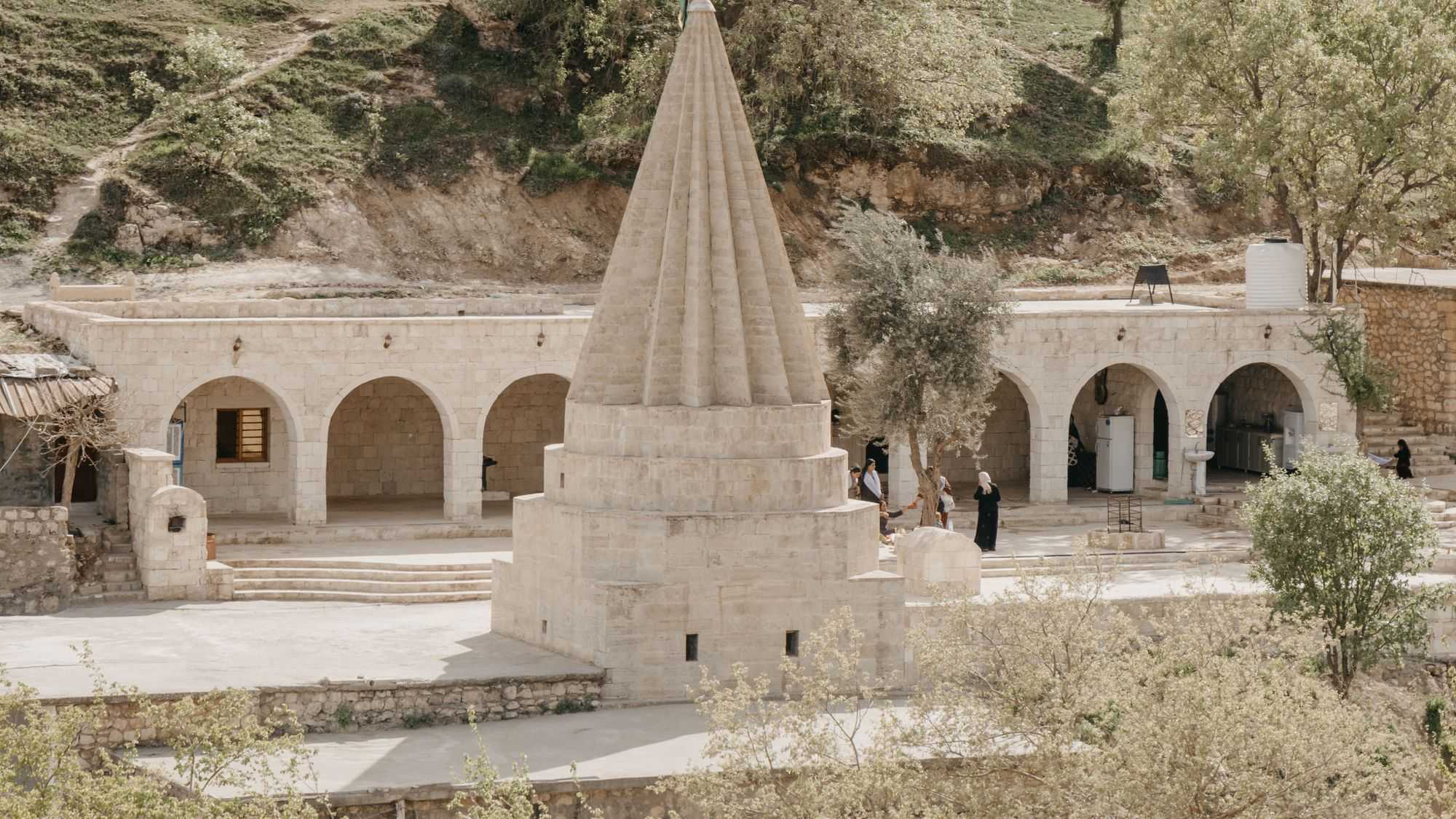
A good day's journey from Duhok, we suddenly discover men sitting in the sun and drinking tea in the villages again. Actually a familiar sight, were it not for Ramadan. A clear indication that these are not Muslims. We are in the territory of the Yazidis.
Yezidiism is a monotheistic religion whose roots are said to go back to 2000 years before Christ. One becomes a Yazidi exclusively by birth, because both parents must belong to the religious community. The brutal violence of the IS against Yazidis in northern Iraq caused horror worldwide in 2014. Hundreds of thousands fled to the Kurdish autonomous regions - where many still live in refugee camps, some of which we saw on our way. But many also fled abroad, especially to Germany, where it is estimated that around 200,000 Yazidis live today. So it is not surprising that we are repeatedly spoken to in German.
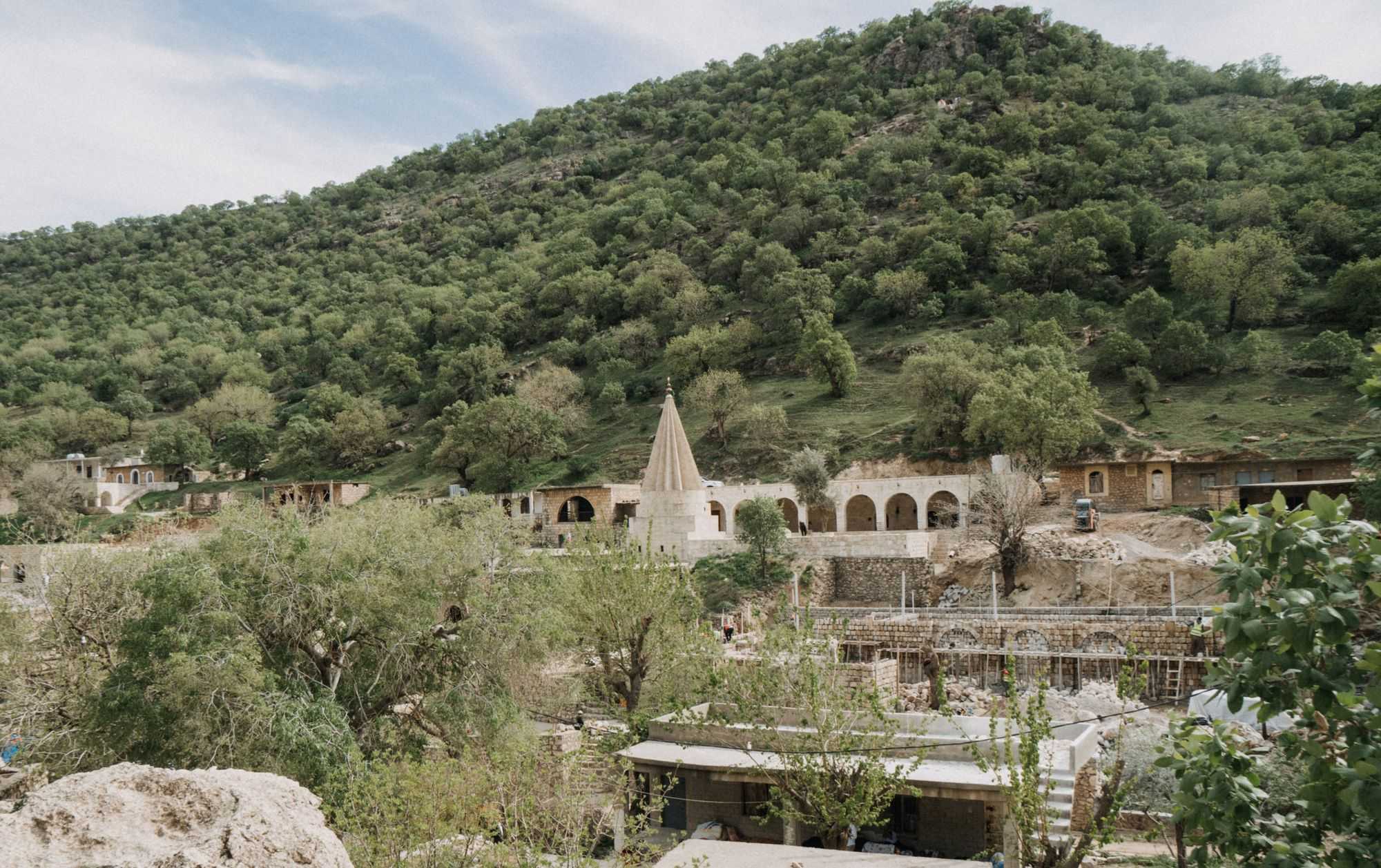
Our destination is Lalish, a valley where the central sanctuary of the Yazidis is located and where they meet to celebrate the important festivals. At the entrance to the valley, a now familiar sight awaits us, a military checkpoint. But for once we cannot pass easily, Beni has to put on long trousers first. Now appropriately dressed, we climb the last few metres up to the village. The road is parked up with cars and teeming with people. We are lucky because the Yazidi New Year's Festival takes place in April and even though we are a few days early, many have already arrived and are enjoying the pleasant weather and the community.

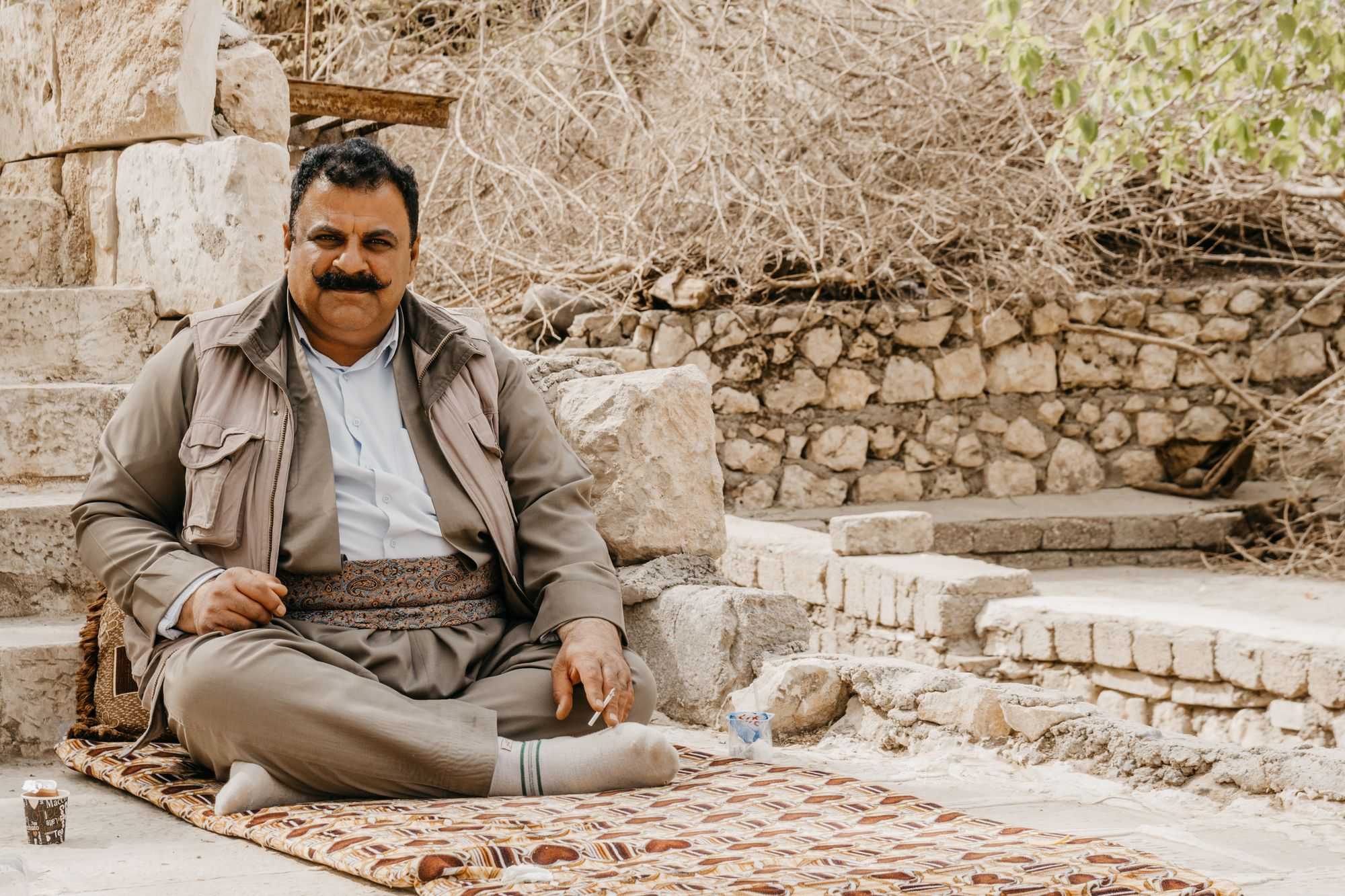
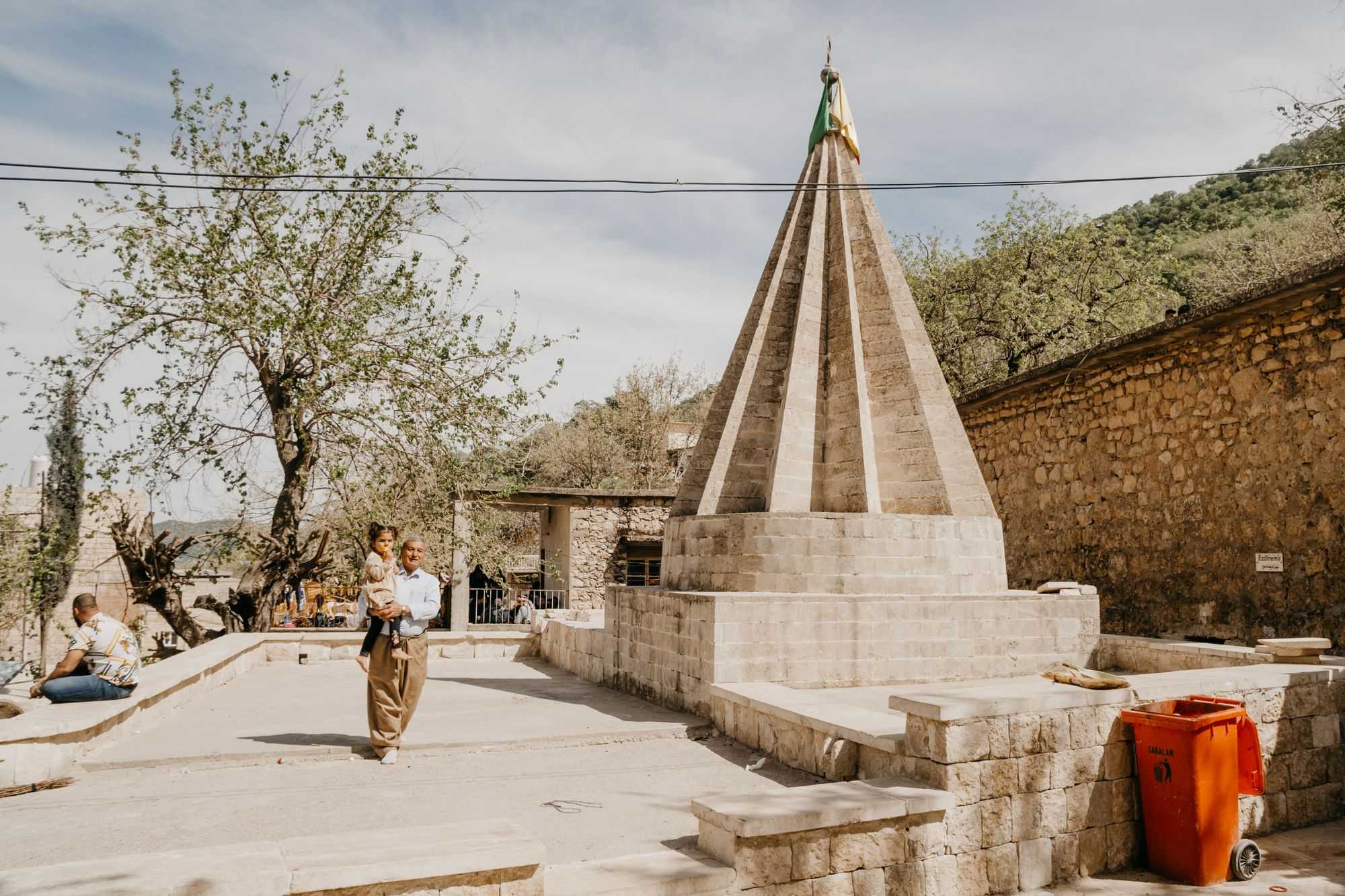
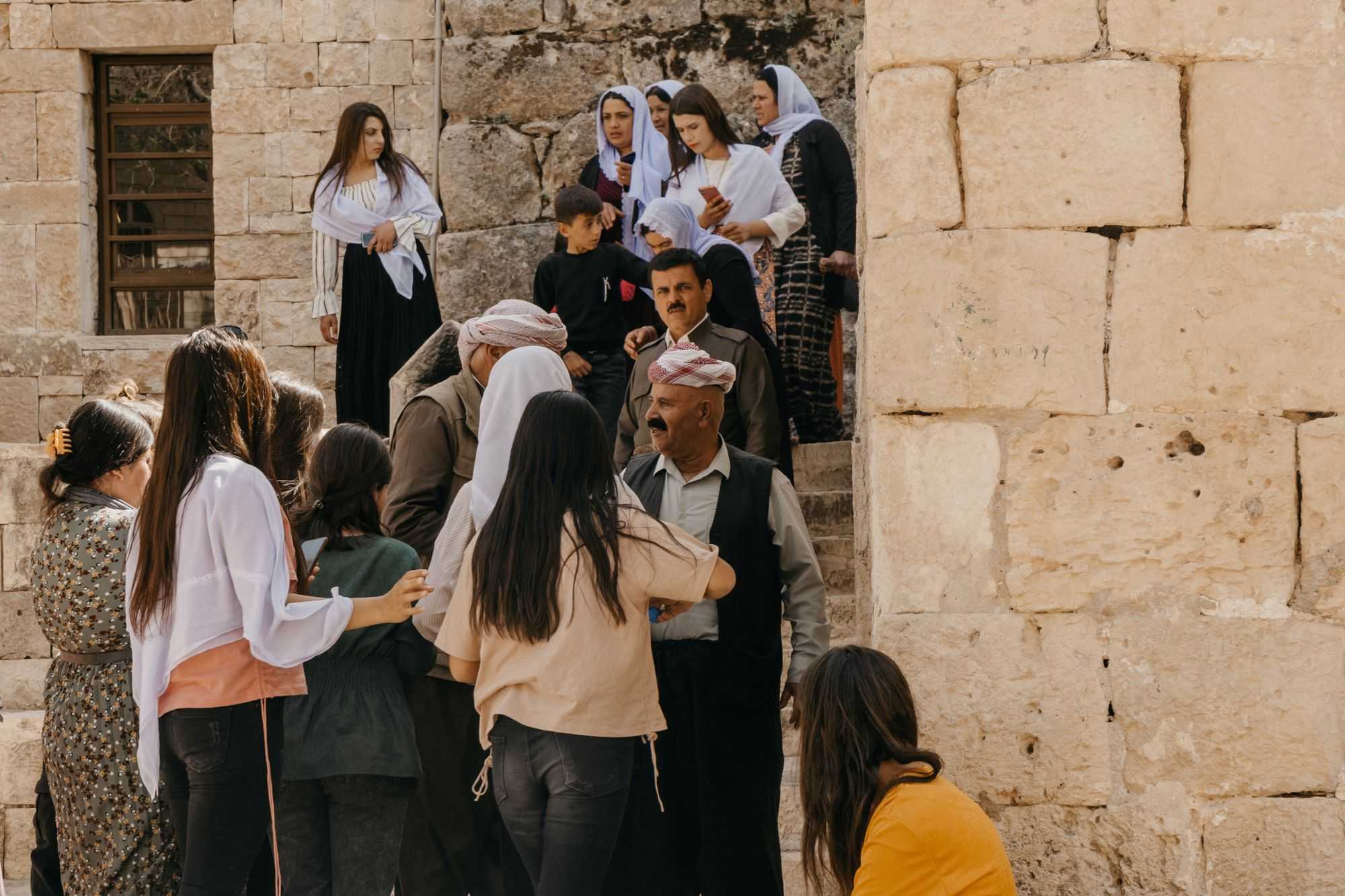
At the entrance to the village we have to take off our shoes, as it is a sacred place. We stand out, of course because of our bicycles, but also because there are hardly any non-Yesidic visitors here. In no time at all, we are taken under the wing of a German Yazidi who has come from Germany especially for the New Year with his family and shows us around the various buildings. Everything is explained to us and except for the Holy of Holies, where only Yazidis are allowed in, we can visit all the rooms. We learn a lot about the different customs, and we notice that many Yazidis are not really familiar with them either. Especially for those who live abroad, it is sometimes the first time they are here.
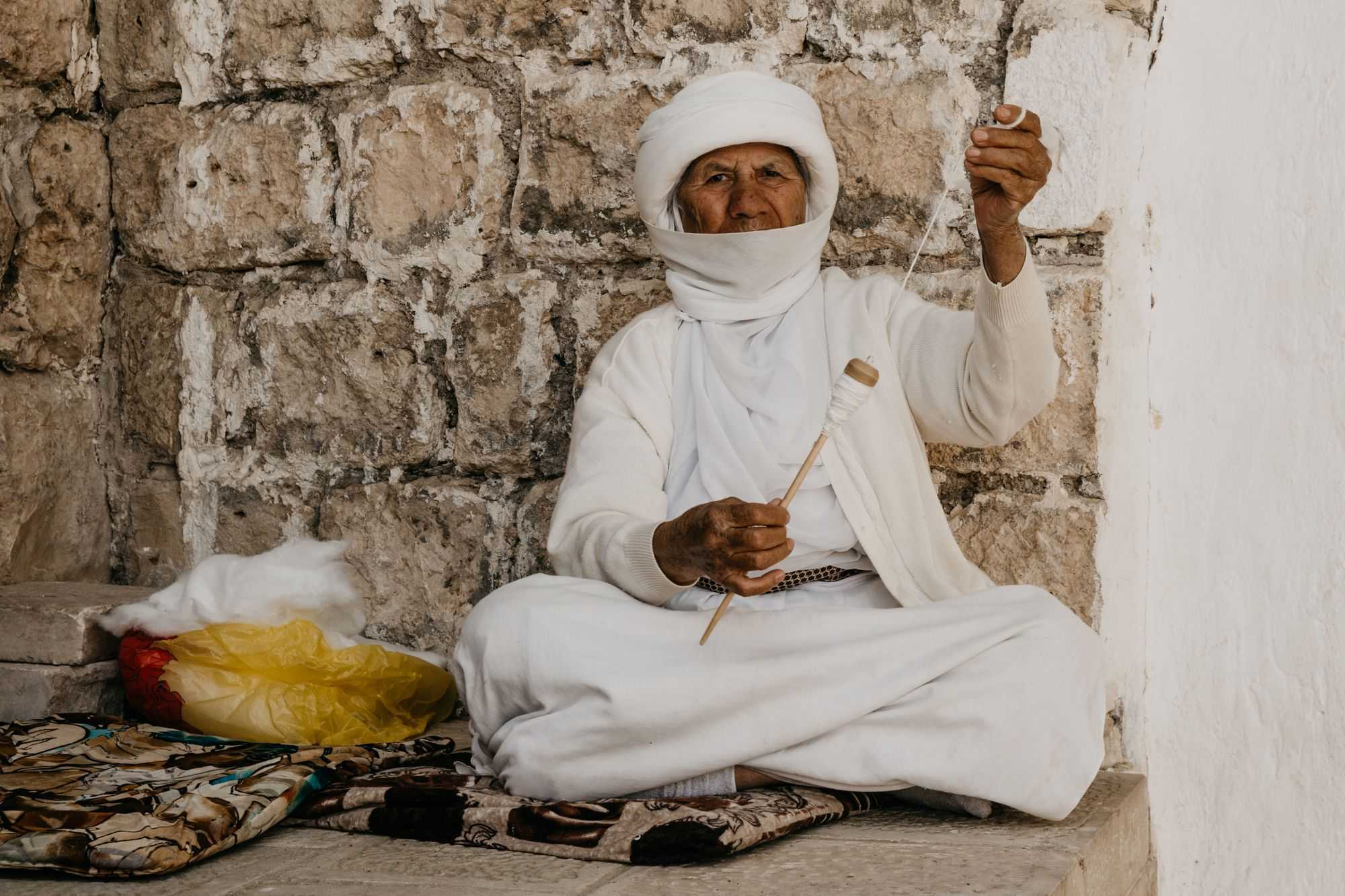
After the tour, we are taken to an inner courtyard where we sit down with the men and enjoy a cup of tea before the food is served. They are very interested and thanks to the many German-speaking Yazidis we can for once have real conversations and ask our questions. Suddenly Sara has the phone held to her ear with a relative from our hometown Winterthur, the world is not so big after all. The meal is eaten standing up and tastes delicious. Rice with meat and vegetables, as is usually the case here in northern Iraq. Afterwards we continue with Çay. When we want to pay for the meal at the end, we are strictly refused, everything is free in Lalish. Once again overwhelming hospitality. We thank them warmly and set off to discover the village on our own.
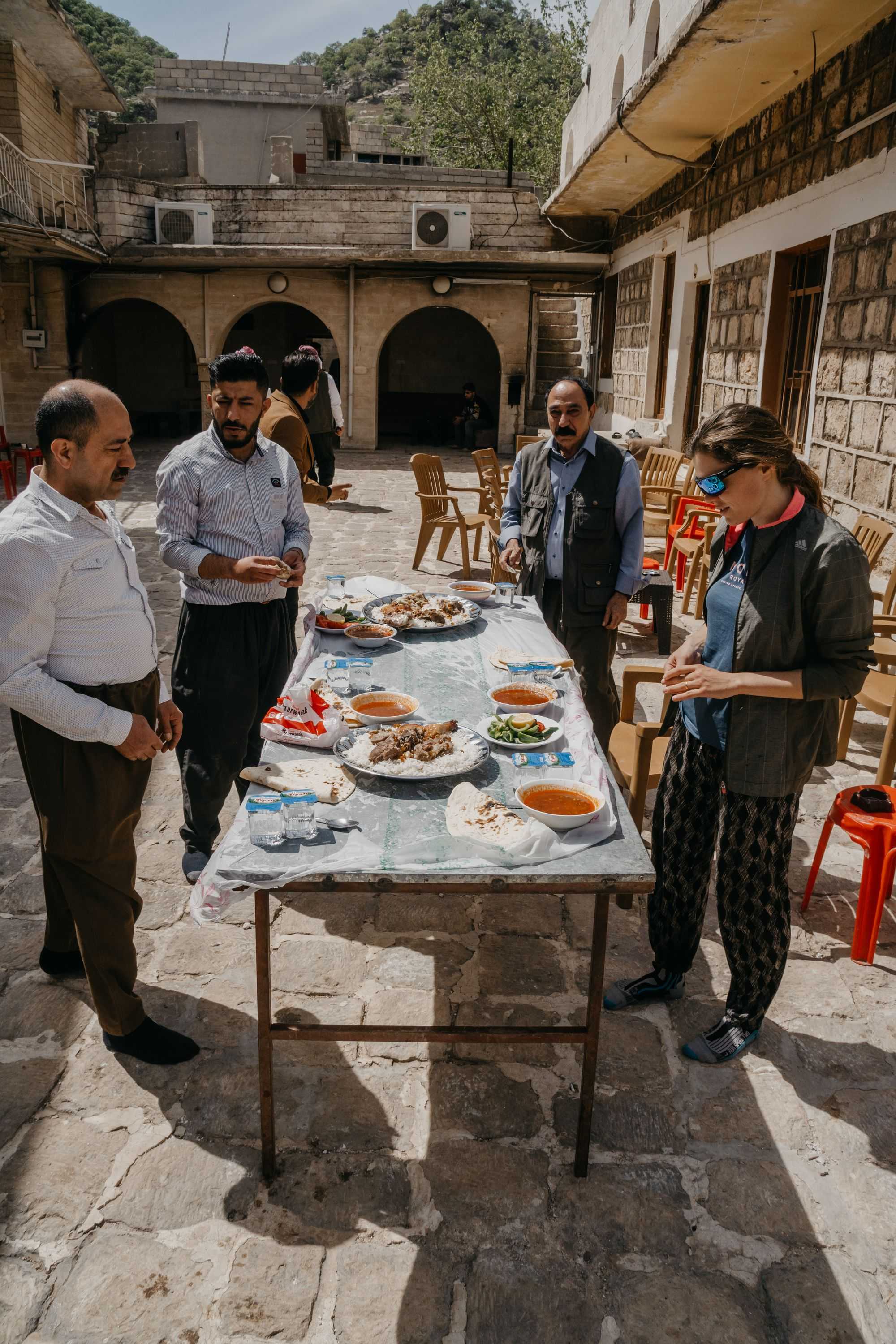
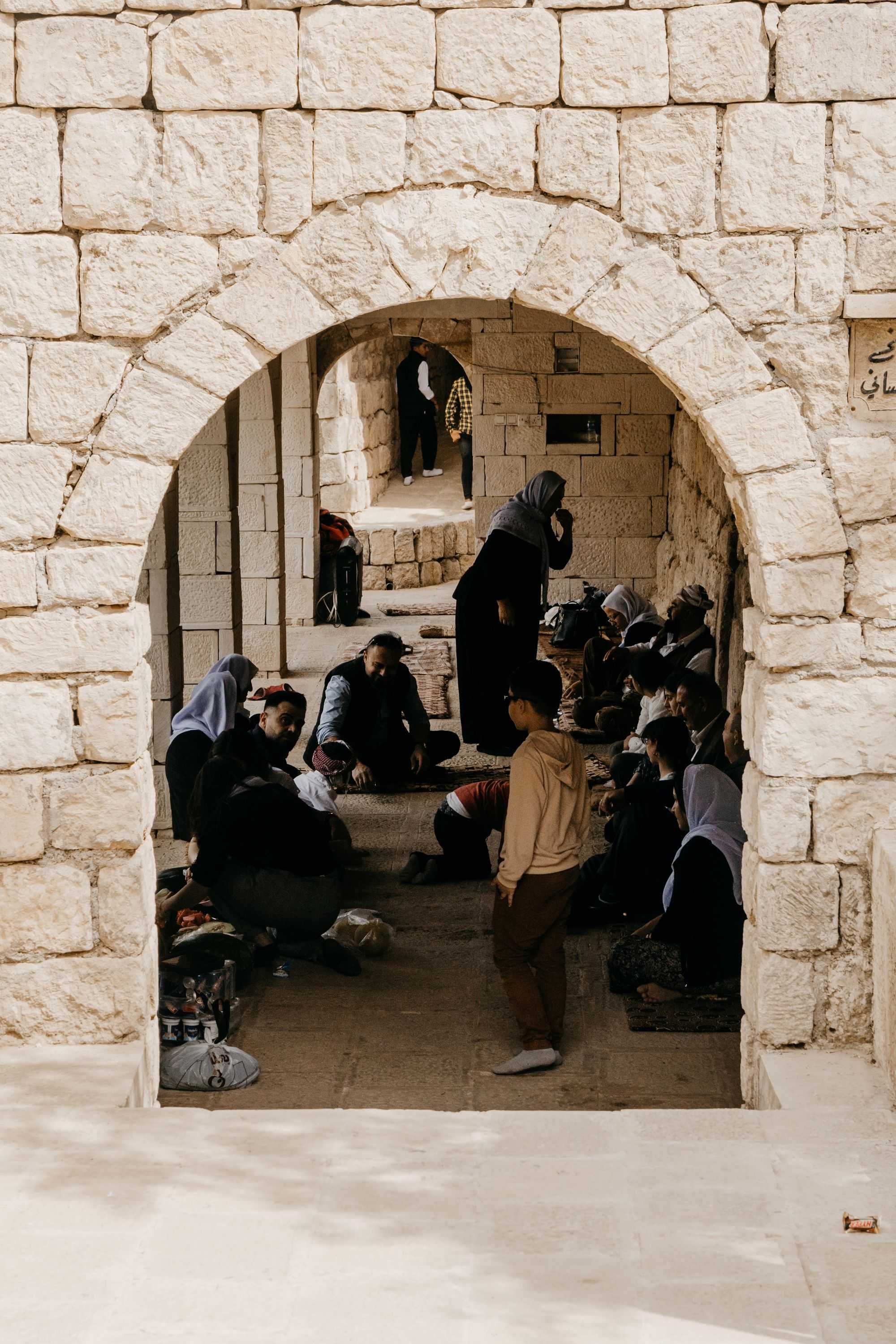
Everywhere families, even whole clans, sit together to drink tea and celebrate the community. It is this cohesion that stands out for us. The togetherness is warm, without the families knowing each other. Normally they are always a minority, but here they are among themselves and visibly enjoy it. Again and again we are invited to join them, which we do. We quickly find someone who speaks English or rather German and translates. We feel at home here and almost forget the time a little. When we finally set off again, it is already late afternoon.
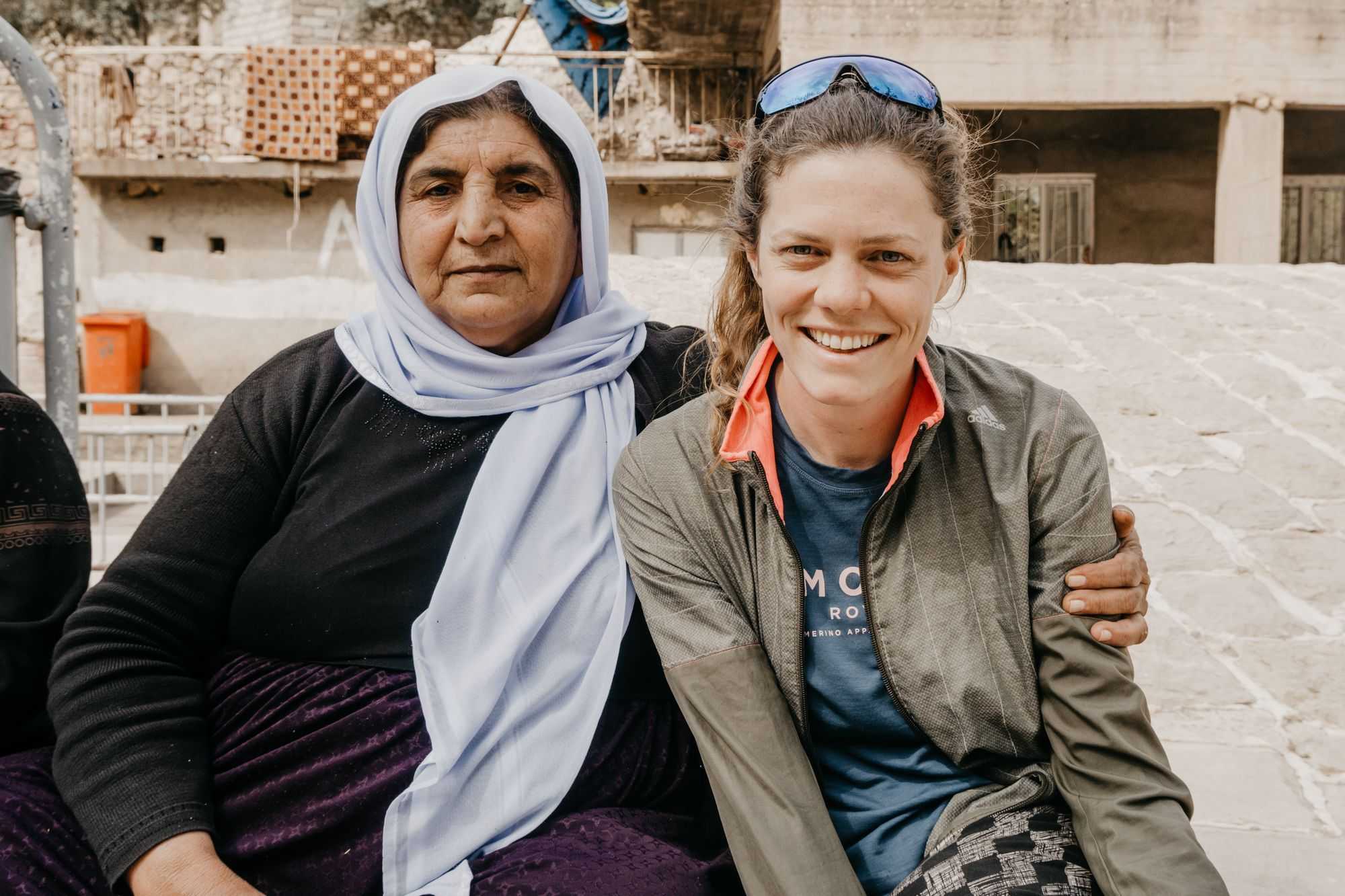
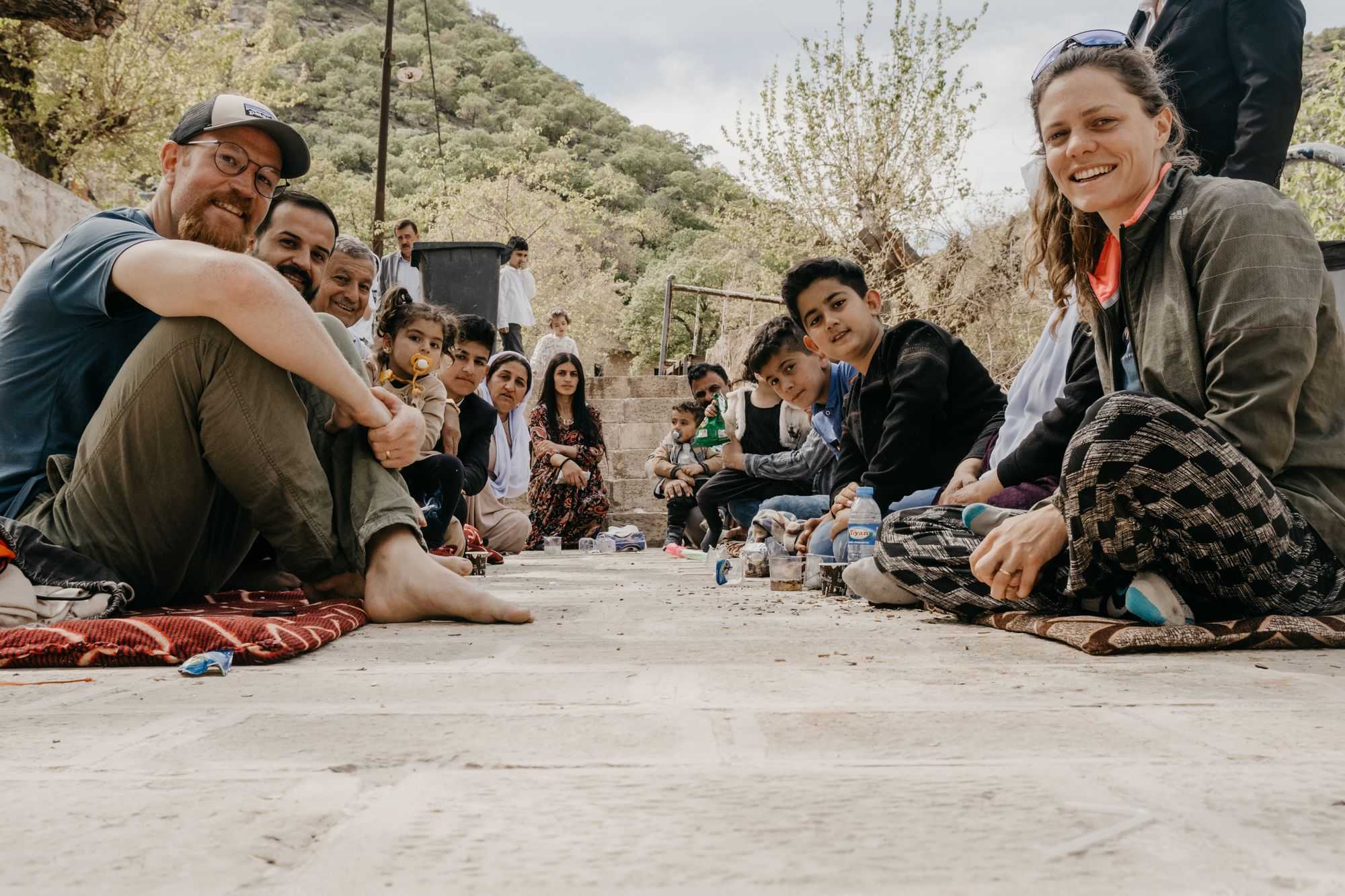
For us it was an immersion into a completely foreign religion, but even more into the community, because that is what was particularly noticeable in this place. And who knows, maybe we will suddenly meet a Yazidi at home one day...